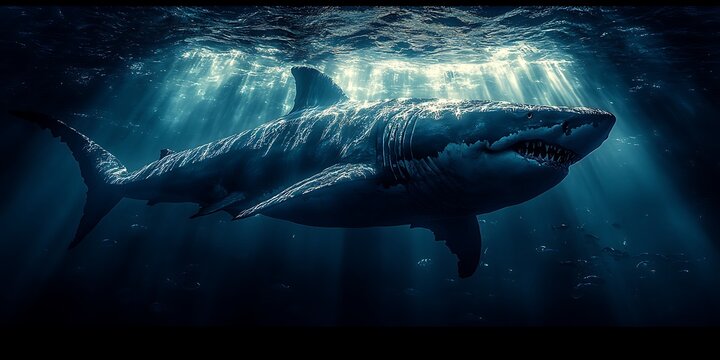

Cosmox Blogs
Deep Sea Gigantism: Exploring the Giants of the Abyss
In the shadowy depths of Earth’s oceans, an extraordinary phenomenon called deep-sea gigantism has sculpted creatures that challenge our very concept of size. Here, far below the waves and the reach of sunlight, marine life thrives in a strange, oversized form. From the hulking giant and colossal squids that drift through the dark to the massive isopods scuttling along the ocean floor, these oversized beings seem like something out of myths or ancient lore. For centuries, the mystery of why deep-sea creatures grow so large compared to their shallow-water counterparts has intrigued and baffled scientists and explorers alike.
Understanding Deep Sea Gigantism
What is Deep Sea Gigantism
Deep sea gigantism refers to the tendency of certain marine organisms to grow significantly larger in deep-sea environments than their counterparts in shallower waters. This phenomenon has been documented in various species, including crustaceans, fish, and cephalopods. The reasons behind this intriguing adaptation are complex and multifaceted, involving a combination of environmental pressures and biological factors.
Where does it occur?
Deep sea gigantism is primarily observed in the bathypelagic zone, which extends from 1,000 to 4,000 metres below the ocean surface. This realm of perpetual darkness, immense pressure, and near-freezing temperatures provides a unique environment for the evolution of gigantic organisms. However, gigantism can also be found in other deep-sea areas, including:
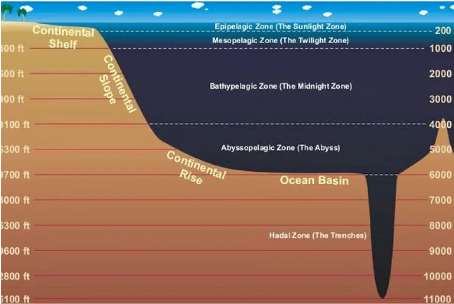
- Abyssal Zone: Ranging from 4,000 to 6,000 metres deep, this zone is characterised by flat plains and occasional underwater mountains.
- Hadal Zone: Extending beyond 6,000 metres into ocean trenches, this zone is home to some of the deepest parts of the ocean.
- Hydrothermal Vents: These ecosystems support unique life forms that thrive on chemicals emitted from the Earth's crust.
Recent studies have shown that deep-sea gigantism is widespread across various ocean basins. For instance, research in the Clarion Clipperton Zone in the Pacific Ocean has revealed large benthic organisms associated with polymetallic nodule fields.
When did it evolve?
The evolution of deep-sea gigantism is believed to have occurred hundreds of millions of years ago as organisms adapted to the unique conditions of the deep ocean. While the exact timeline is difficult to determine, fossil evidence suggests that some forms of deep-sea gigantism may have existed since the Paleozoic era, over 250 million years ago.
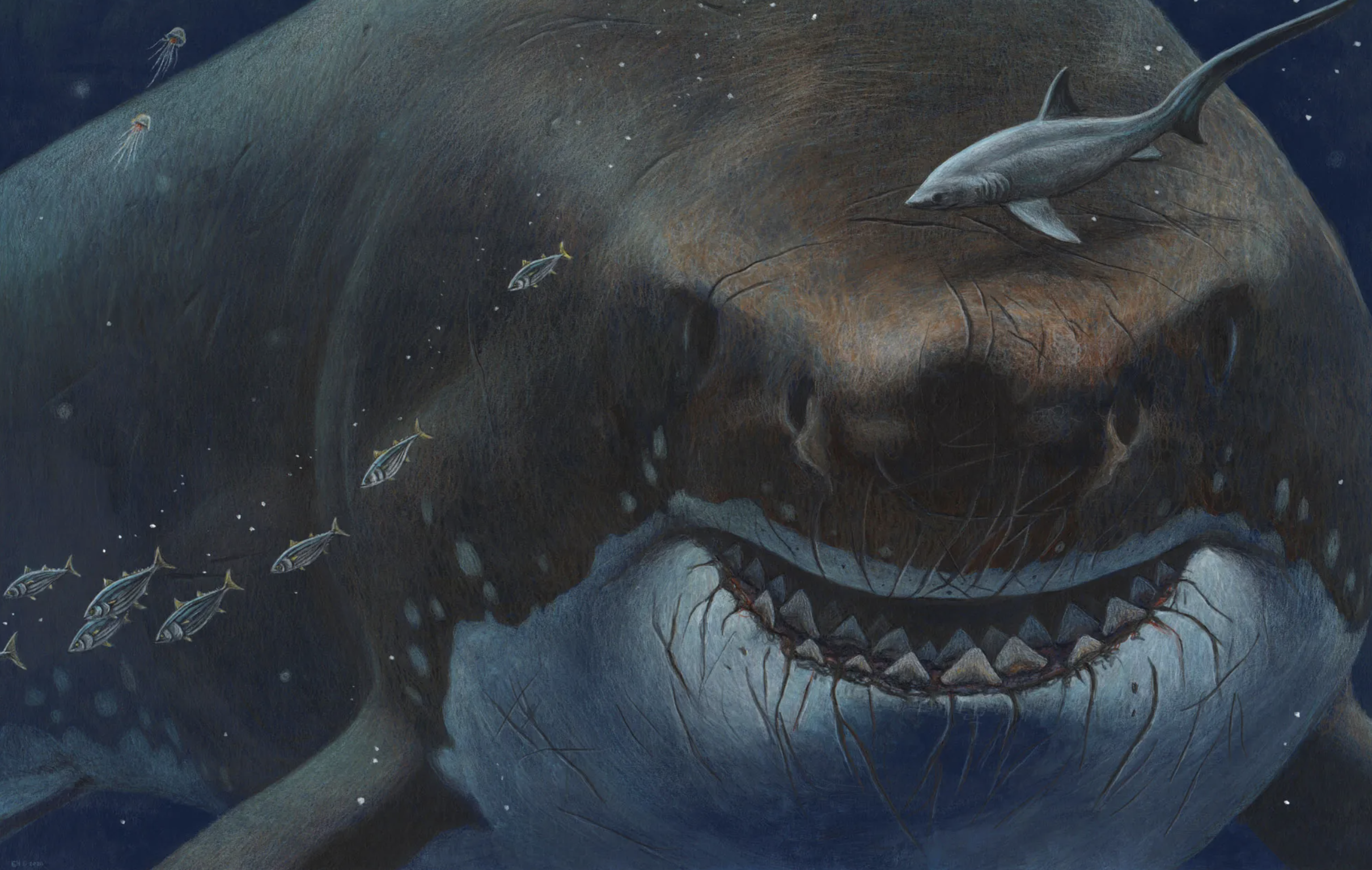
The occurrence of gigantism in different species is not synchronous; it has evolved independently in various lineages at different times. For example, while giant squids have become emblematic of this phenomenon, other species like giant isopods and amphipods have also independently developed larger body sizes due to specific environmental pressures, which leads to the next point of:
Factors Influencing Occurrence
There are several environmental and biological factors contributing to the occurrence of deep-sea gigantism, including:
-> Pressure and Temperature: The extreme conditions of the deep sea influence growth patterns. High pressure can affect metabolic rates and cellular processes, potentially allowing for larger body sizes. Additionally, lower temperatures may slow down metabolic rates, leading to longer lifespans and greater growth opportunities
-> Food Scarcity: In the deep sea, where food sources are often few and far between, larger body sizes can be advantageous for energy storage. This adaptation allows organisms to survive longer periods between feeding opportunities. Larger animals can store more energy in their bodies and may be able to consume larger prey.
-> Predator Avoidance: Increased size can serve as a defence mechanism against predators in vast open spaces. Larger organisms are harder to catch and consume, giving them a survival advantage.
-> Oxygen Availability: The deep sea contains more dissolved oxygen than surface waters at certain depths. This availability may support larger body sizes in some organisms by providing sufficient oxygen for their metabolic needs.
-> Reduced Gravity: The buoyancy provided by water reduces the effects of gravity on marine organisms. This allows them to grow larger without facing the structural limitations imposed by terrestrial environments.
-> Evolutionary Pressures: Specific evolutionary pressures can drive gigantism as species adapt to their ecological niches. For example, some species may evolve larger sizes due to competition for resources or changes in predator-prey dynamics.
Examples of Deep Sea Gigantism
While giant and colossal squids are perhaps the most famous examples of deep-sea gigantism, many other species exhibit this phenomenon across various taxa:
Invertebrates
-> Giant Isopod (Bathynomus giganteus): These crustaceans can grow up to 76 cm in length—much larger than their shallow-water relatives.
-> Giant Amphipod (Alicella gigantea): Found in hadal trenches, these amphipods can reach lengths of 34 cm compared to typical amphipod sizes of less than 1 cm.
Fish
-> Giant Oarfish (Regalecus glesne): The world's longest bony fish can reach lengths up to 11 metres.
-> Greenland Shark (Somniosus microcephalus): One of the largest known shark species grows up to 6.4 metres long and potentially lives for centuries.
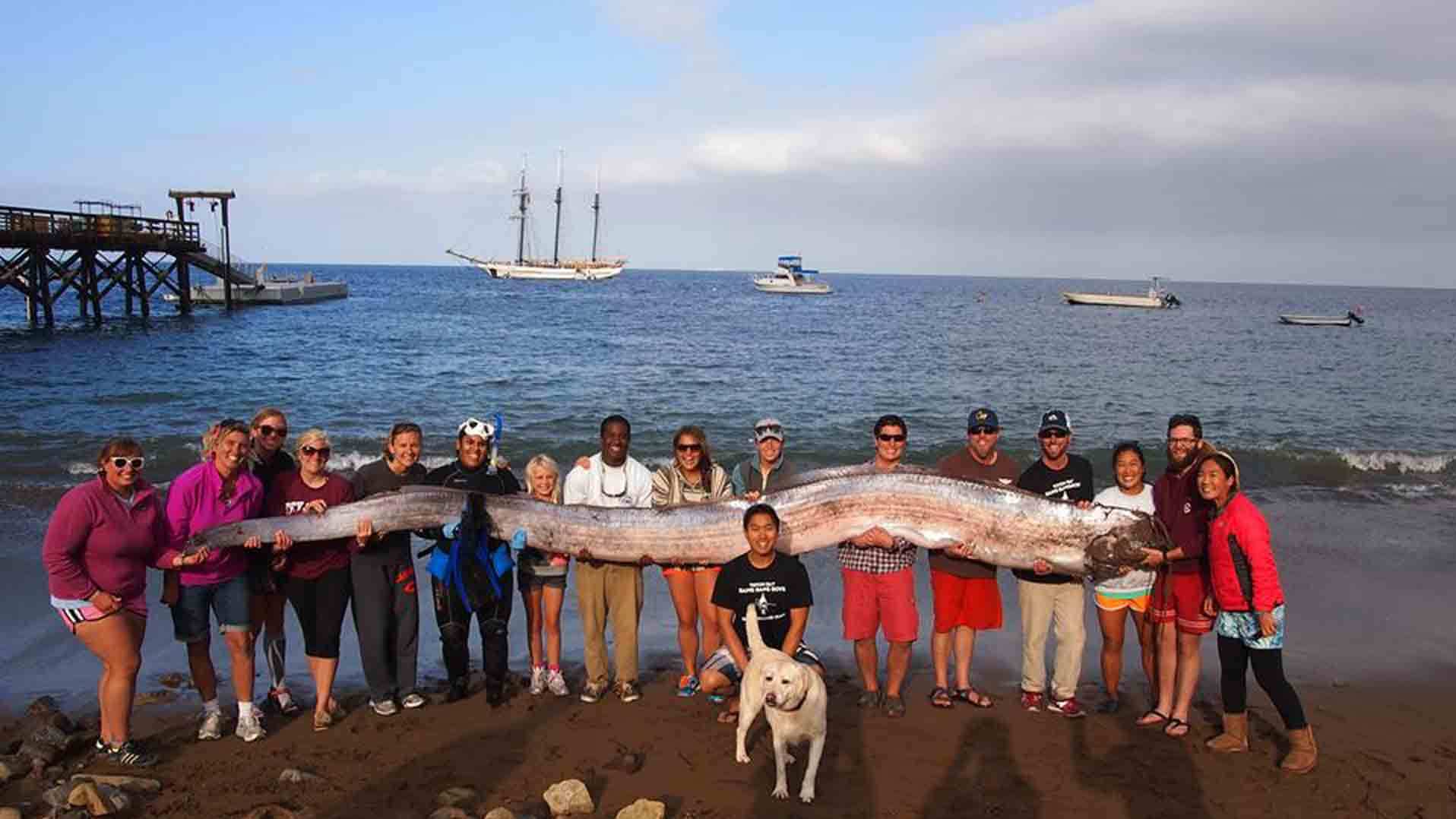
Giant Oarfish
Cephalopods
-> Giant Squid (Architeuthis dux): Can grow up to 13 metres in length with females typically larger than males.
-> Colossal Squid (Mesonychoteuthis hamiltoni): Even more impressive in size, reaching lengths up to 14 metres and weighing up to 495 kilograms.

Ecological Significance
The occurrence of gigantism in deep-sea ecosystems plays a crucial role in marine ecology:
-> Trophic Interactions: Giant species often occupy top predator positions in food webs, helping regulate populations of smaller organisms.
-> Carbon Sequestration: Large organisms can sequester significant amounts of carbon in their bodies, contributing to the ocean's role in carbon cycling.
-> Habitat Creation: Some giant species create habitats for other organisms—deep-sea corals provide essential structures that increase biodiversity.
-> Nutrient Cycling: When giant organisms die and sink to the ocean floor, they provide substantial food resources for scavengers like deep-sea fish and crustaceans.
Challenges in Studying Deep Sea Gigantism
Research on deep-sea gigantism presents unique challenges due to the inaccessibility of these habitats. Scientists have had to rely on various methods:
-> Analysis of specimens caught in fishing nets or washed ashore.
-> Use of deep-sea submersibles and remote-operated vehicles (ROVs) for observation.
-> Study of stomach contents from predators like sperm whales.
-> Genetic analysis of tissue samples to understand population structure and evolution.
Recent technological advancements have allowed for more direct observations in natural habitats. For instance, autonomous underwater vehicles (AUVs) have enabled extensive photographic surveys revealing distribution patterns among large benthic organisms related to seafloor features like polymetallic nodules.

Threats & Conservation
Despite their size and depth range, deep-sea giants face several threats:
-> Climate Change: Rising ocean temperatures affect food availability and habitat conditions.
-> Deep-Sea Fishing Activities: Accidental capture during fishing operations can lead to population declines.
-> Pollution: Plastics and other contaminants accumulate in deep-sea environments; recent studies have shown microplastics present even at great depths.
-> Deep-Sea Mining: The potential exploitation of polymetallic nodules poses risks not only through habitat destruction but also through potential disruptions within food webs.
Conservation efforts for these species are challenging due to difficulties studying and monitoring populations effectively. However, broader initiatives aimed at protecting deep-sea ecosystems such as establishing marine protected areas may help safeguard these remarkable creatures.
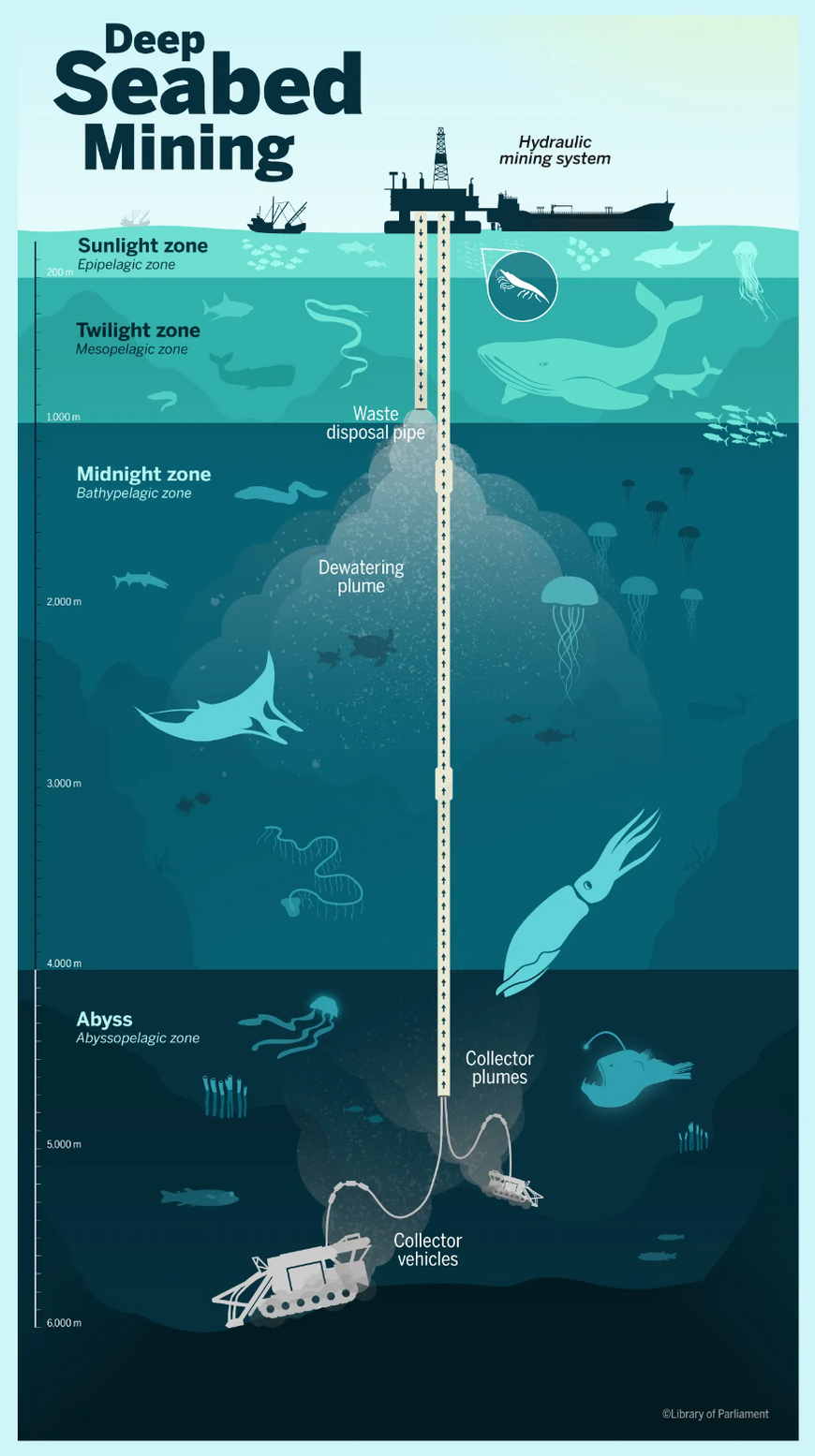
Recent Research Insights
Recent studies have shed light on how climate change impacts these ecosystems:
- A study published by researchers at Stanford University revealed that rising temperatures could alter predator-prey dynamics significantly within deep-sea ecosystems.
- Another research effort focused on how increased acidification affects calcifying organisms at depth potentially impacting those larger species reliant on calcium carbonate structures for survival.
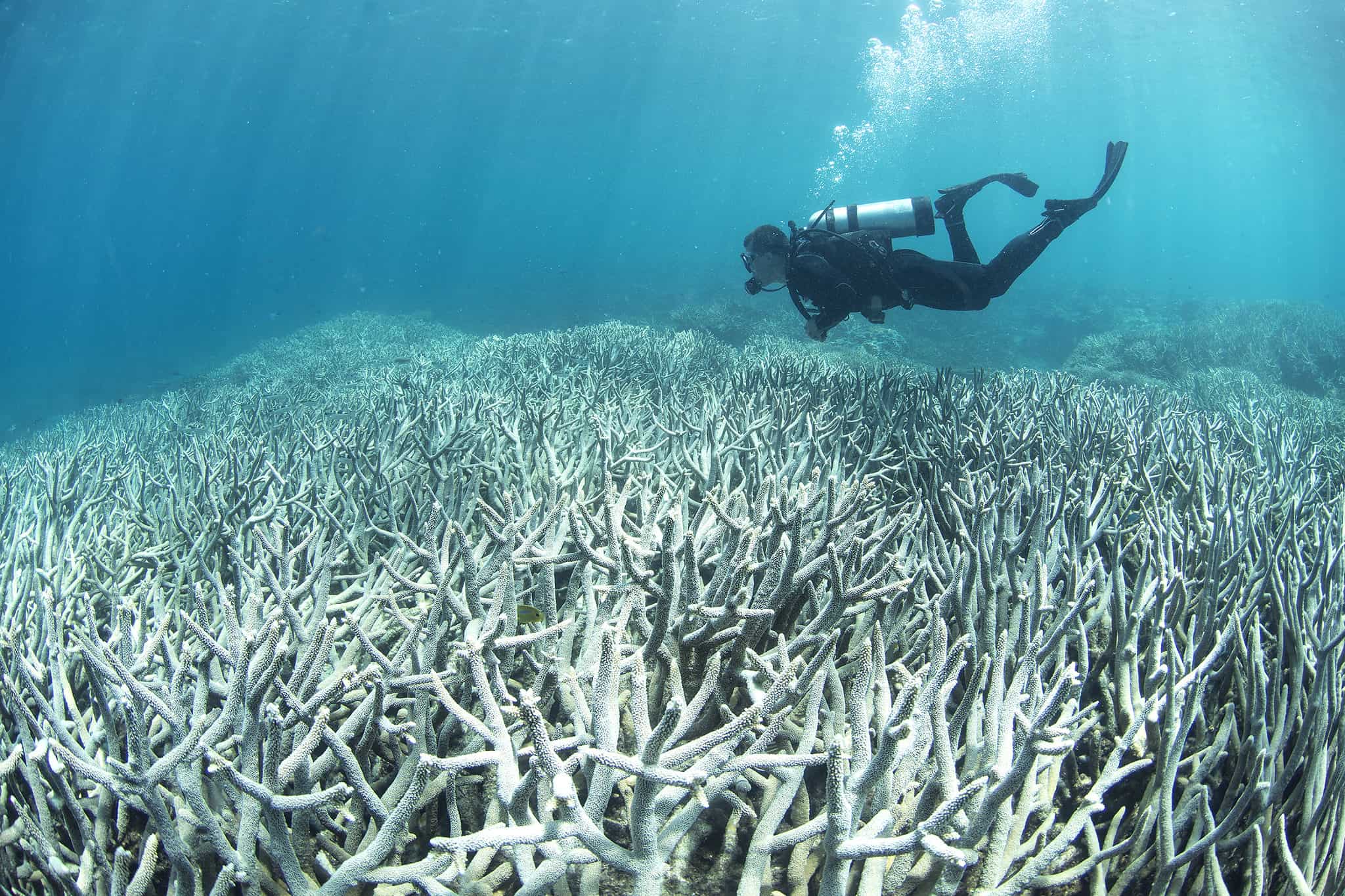
These findings emphasize not only how interconnected these ecosystems are but also how vulnerable they remain amid global environmental changes.
Conclusion
The occurrence of deep-sea gigantism is a testament to life's incredible adaptability under extreme conditions. From abyssal plains to hadal trenches, these massive creatures captivate our imagination while providing valuable insights into evolutionary processes shaping life within our oceans' least explored regions.
As we continue exploring these depths through advanced technology like ROVs and AUVs—alongside international cooperation towards sustainable practices, we may uncover further secrets about these fascinating giants inhabiting unique ecosystems far from human reach. Understanding deep-sea gigantism serves as a reminder that vast mysteries still exist beneath our oceans' surfaces, and highlights the importance of continued research efforts aimed at protecting these fragile environments for future generations.

Cosmox Blogs
A non profit organization that works on writing and delivering blogs on cosmology, natural sciences & environment, so that people can learn more about it. We even run a forums page, where our users interacts with each other and discuss about Cosmology, Natural Sciences & Astronomy. We even run an instagram and a youtube channel with podcasts.